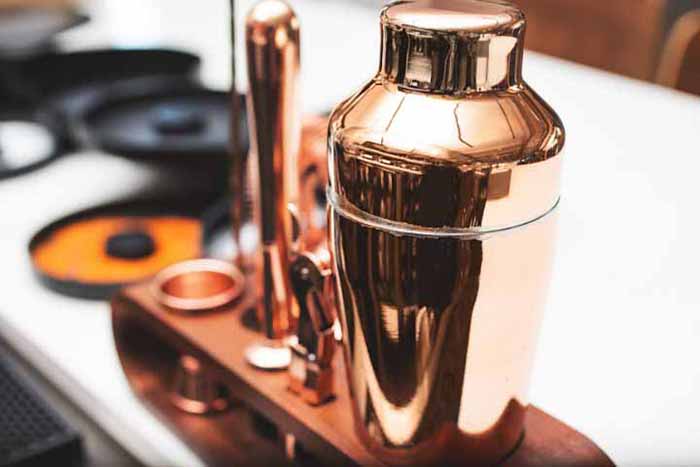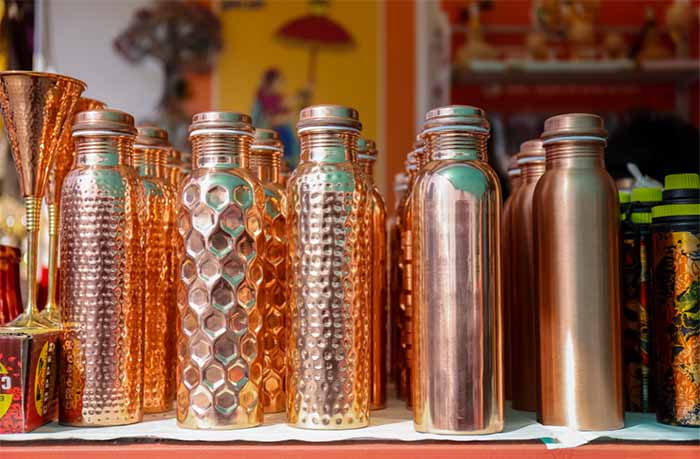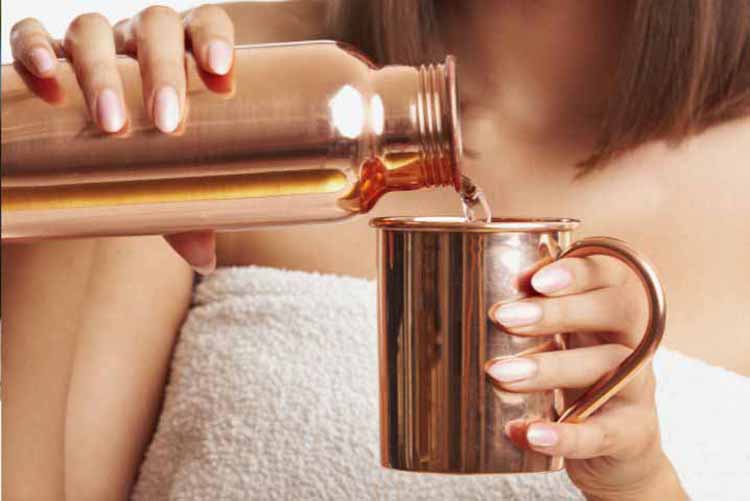Hold on if you’re curious about Can Copper Water Bottle Be Kept in Fridge for an ice-cold sip. You might want to rethink that.
Copper bottles are great for naturally cleaning and improving your water, but can copper water bottle be kept in the fridge? No, it’s not a good idea. Cold can make more copper mix into your water, which isn’t healthy. It can also reduce the bottle’s benefits and even cause damage over time.
There’s more happening than you might think! So, before you chill your copper bottle, know that it actually works best when kept at room temperature.
Should You Keep Your Copper Water Bottle in The Fridge?
The short answer: It’s not a good idea. Now, let’s get into the details about why it’s not wise to keep your copper bottle in the fridge.
Increased Risk of Metal Leaching
When you store water in copper bottles at cold temperatures (like inside your fridge), it can lead to higher copper levels in the water.
According to a study published in the Journal of Environmental Health, storing water at 4°C (about 39°F) for more than six hours raised copper content by over 30% compared to water kept at room temperature. This rise in copper can sometimes push levels beyond the World Health Organization’s safe drinking water limit of 2 mg/L.
Too much copper in your system isn’t just a number issue; it can affect your health. You may experience nausea, stomach cramps, or even more serious long-term effects like liver damage if copper levels build up over time.

Cold and Acidic Conditions Make Things Worse
Cold places, especially when the temperature changes, can cause copper to mix into the water faster.
Nutritionist Ryan Fernando says that when the copper bottle gets cold and moisture forms on it, more metal can leak into your water. If you add lemon or anything acidic to your water, this happens even more, which can be risky for your health.
You Lose the Real Health Benefits
One of the best advantages of using a copper water bottle is the natural alkalinization and ionization process it provides at room temperature.
Copper helps balance your water’s pH and releases tiny, beneficial amounts of copper ions, something your body actually needs in moderation. But storing the bottle in the fridge slows this process. So, not only do you risk getting too much copper from cold storage, but you also miss out on the good copper benefits.
Your Bottle Might Get Damaged Over Time
Refrigerating a copper bottle doesn’t just affect what’s inside; it can also harm the bottle itself.
The outer surface may develop moisture due to condensation, which can lead to tarnishing, staining, or that patchy greenish patina you often see on neglected copper. On top of that, sudden shifts from warm to cold (and back again) create thermal stress that could eventually weaken or deform the metal.
Cleanliness Matters, Too
Storing your copper bottle in a fridge increases the chance of moisture collecting around the lid or neck. This kind of damp environment can encourage mold or mildew growth, especially if the bottle isn’t properly dried or tightly sealed.
A cool, dry place outside the fridge is always a safer bet for keeping both your water and your bottle fresh and clean.

Do’s And Don’ts with Copper Water Bottles
You already know that storing your copper water bottle in the fridge is not a good idea. Now, let’s look at the best ways to handle a copper water bottle.
Do’s with Copper Water Bottles
- Store water at room temperature: Let the copper naturally ionize and alkalize the water for 6-8 hours (or overnight) to enjoy the health benefits.
- Clean it regularly: Use a natural mix of lemon juice and salt or a copper cleaner to keep the bottle shiny and hygienic. Clean it at least 2-3 times a week.
- Dry thoroughly after washing: Prevent moisture build-up, which can cause tarnish or mold near the lid.
- Use for plain drinking water only: Stick to storing clean, filtered water. This avoids chemical reactions and preserves the copper’s wellness benefits.
- Replace water daily: Fresh water prevents microbial growth and helps maintain copper’s natural purification process.
- Check for interior lining: If your bottle is lined, follow the manufacturer’s instructions. Some are designed to reduce copper leaching.
Don’ts with Copper Water Bottles
- Don’t refrigerate the bottle: Cold temperatures increase copper leaching, which may raise levels beyond safe limits and reduce health benefits.
- Don’t pour hot or boiling water into it: High heat can damage the metal and release excess copper into the water.
- Don’t store acidic drinks (like lemon water, juice, or soda): Acids react with copper, increasing the risk of metal leaching and altering the taste.
- Don’t leave water in the bottle for more than 24 hours: Stagnant water can cause microbial growth and raise copper content unnecessarily.
- Don’t scrub with harsh steel wool or strong chemicals: It can scratch or corrode the metal. Use soft cloths and natural cleansers instead.
- Don’t ignore signs of damage: If the bottle is tarnished on the inside, develops a metallic smell, or has green/blue patina, clean or replace it before continued use.
Last Thoughts
So, copper water bottles should not be kept in the fridge. Cold temperatures can increase copper leaching, possibly raising levels beyond safe limits and reducing the bottle’s health benefits. It can also cause condensation, metal stress, and tarnishing.
For best results, store your bottle in a cool, dry place and fill it with plain water at room temperature. Let it sit overnight to purify and alkalize the water naturally. Always clean it regularly to maintain its quality and safety.

